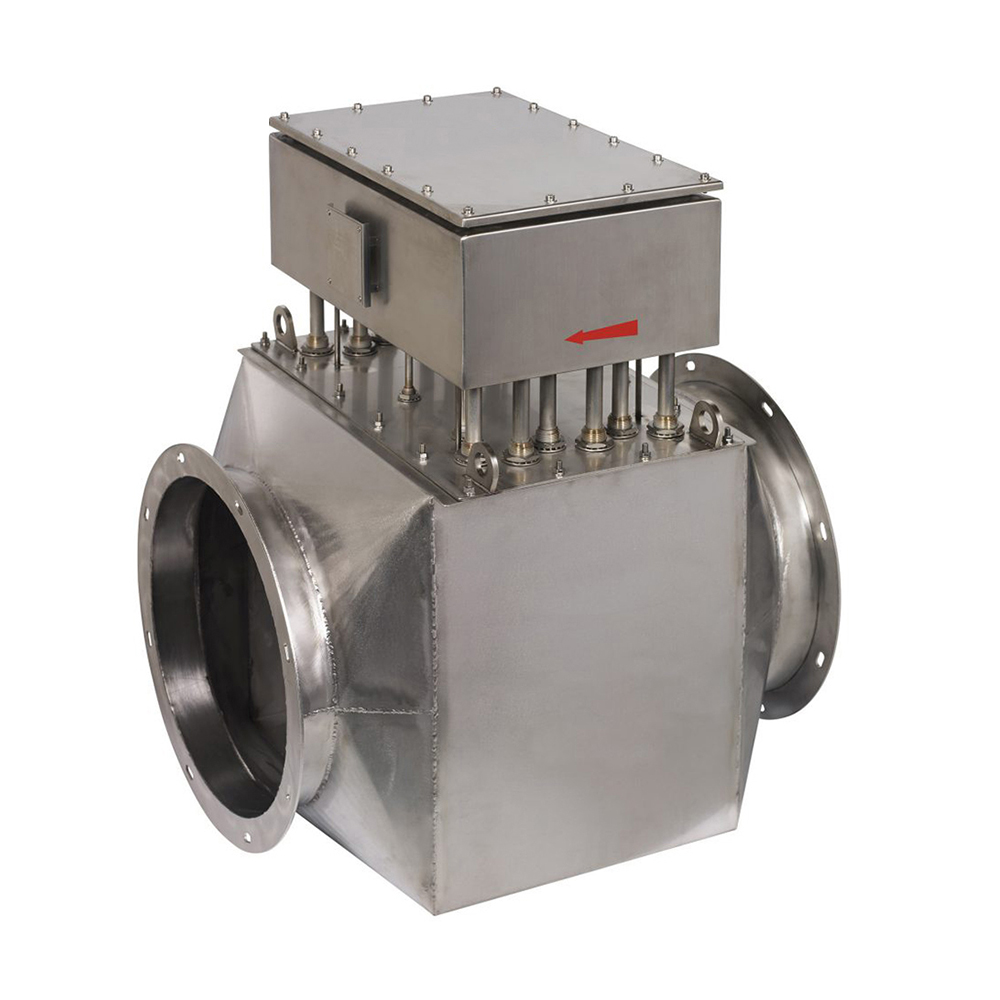Air duct heaters are devices used to heat air as it flows through ventilation or HVAC (Heating, Ventilation, and Air Conditioning) duct systems. They are commonly used in commercial buildings, industrial facilities, greenhouses, clean rooms, and even in some residential systems. Their purpose is to control air temperature for comfort, safety, or process-related reasons.
To understand how air duct heaters work, let’s break it down step by step — from their basic components to their working principles and typical applications.
1. What Is an Air Duct Heater?
An air duct heater is a heating device installed within an air duct to raise the temperature of the air flowing through the ventilation system. It can be electric or steam-based, but electric duct heaters are the most common type used today.
They are often paired with fans, sensors, and thermostats to ensure the heated air is delivered at the desired temperature.
2. Types of Air Duct Heaters
There are a few different types of duct heaters based on their structure and heating method:
-
Electric Duct Heaters: Use electric resistance coils to heat the air. These are the most widely used due to their efficiency and easy control.
-
Steam Duct Heaters: Use steam-filled coils or tubes to heat air. These are used in large industrial systems.
-
Hot Water Duct Heaters: Use circulating hot water to transfer heat via copper or steel coils.
In this article, we’ll focus mainly on electric duct heaters, since they are the most common and easiest to understand.
3. Basic Components
A typical electric air duct heater includes the following key parts:
-
Heating elements: Usually made from nickel-chromium or stainless steel wire, these elements convert electrical energy into heat.
-
Metal frame or casing: Holds the heating elements in place and allows installation into duct systems.
-
Temperature sensors/thermostats: Monitor and regulate the air temperature.
-
Overheat protection devices: Shut down the system if it gets too hot, ensuring safety.
-
Airflow switch: Prevents the heater from turning on when there is no airflow, avoiding overheating.
4. Working Principle: Step-by-Step
Here’s how an electric air duct heater typically works:
-
Airflow Begins: A fan or blower pushes air through the ductwork.
-
Heater Activation: When the system’s thermostat detects that the air temperature is below the desired setting, it sends a signal to the duct heater to turn on.
-
Heating Elements Warm Up: Electricity flows through the heating coils or elements, which resist the electric current and generate heat.
-
Heat Transfer: As air passes over or through the hot elements, it absorbs the heat and increases in temperature.
-
Temperature Control: Sensors and thermostats constantly monitor the output air temperature. If it reaches the set temperature, the heater cycles off.
-
Safety Shutoff (if needed): If airflow stops or temperature exceeds safe limits, built-in safety switches automatically turn off the heater to prevent damage or fire.
5. Why Are Air Duct Heaters Used?
Air duct heaters offer several key benefits:
-
Temperature Control: Maintain a comfortable or required air temperature in large spaces.
-
Supplemental Heating: Add extra heat to areas where the main system isn’t enough.
-
Zoned Heating: Heat specific zones or rooms independently in HVAC systems.
-
Process Heating: In industrial environments, warm air may be needed for drying, curing, or humidity control.
6. Applications of Air Duct Heaters
Air duct heaters are used in a wide variety of environments, including:
-
Commercial buildings: Offices, hospitals, and shopping malls.
-
Industrial factories: Where specific temperatures are needed for manufacturing processes.
-
Greenhouses: To maintain a stable temperature for plant growth.
-
Clean rooms: Where consistent air conditions are critical.
-
Warehouses: To ensure employee comfort and product preservation.
7. Energy Efficiency Considerations
Modern duct heaters are often equipped with modulating controls, which allow the heating output to adjust gradually instead of turning fully on or off. This helps:
Additionally, proper insulation of ductwork and use of airflow sensors help ensure efficient heating performance.
8. Safety Features
Because electric heaters can get very hot, safety is a priority. Most air duct heaters include:
-
Thermal cutouts: Automatically shut off the heater if the temperature goes too high.
-
Airflow interlock: Prevents the heater from working if there is no air moving through the duct.
-
Manual reset buttons: Allow technicians to safely restart the system after a safety trip.
These features make duct heaters very safe when installed and maintained properly.
9. Maintenance Tips
To keep air duct heaters working safely and efficiently:
-
Inspect regularly for dust buildup, which can reduce heat transfer and cause overheating.
-
Check wiring and connections to ensure there are no loose or corroded parts.
-
Test safety devices like thermostats and thermal cutouts to confirm they’re functioning.
-
Clean the ducts and filters to maintain proper airflow.
Regular maintenance ensures long service life and minimizes fire or failure risks.
Air duct heaters are essential components in modern HVAC and ventilation systems. They work by using electric heating elements to warm air as it flows through a duct, providing controlled and consistent heating in various environments. With proper controls, safety features, and installation, they offer an efficient, flexible, and safe heating solution for everything from office buildings to industrial plants.
Whether you’re designing a climate-controlled warehouse, upgrading an HVAC system, or just learning how heating systems work, understanding air duct heaters is a great step toward mastering modern temperature control.


 English
English русский
русский Français
Français Español
Español عربى
عربى
